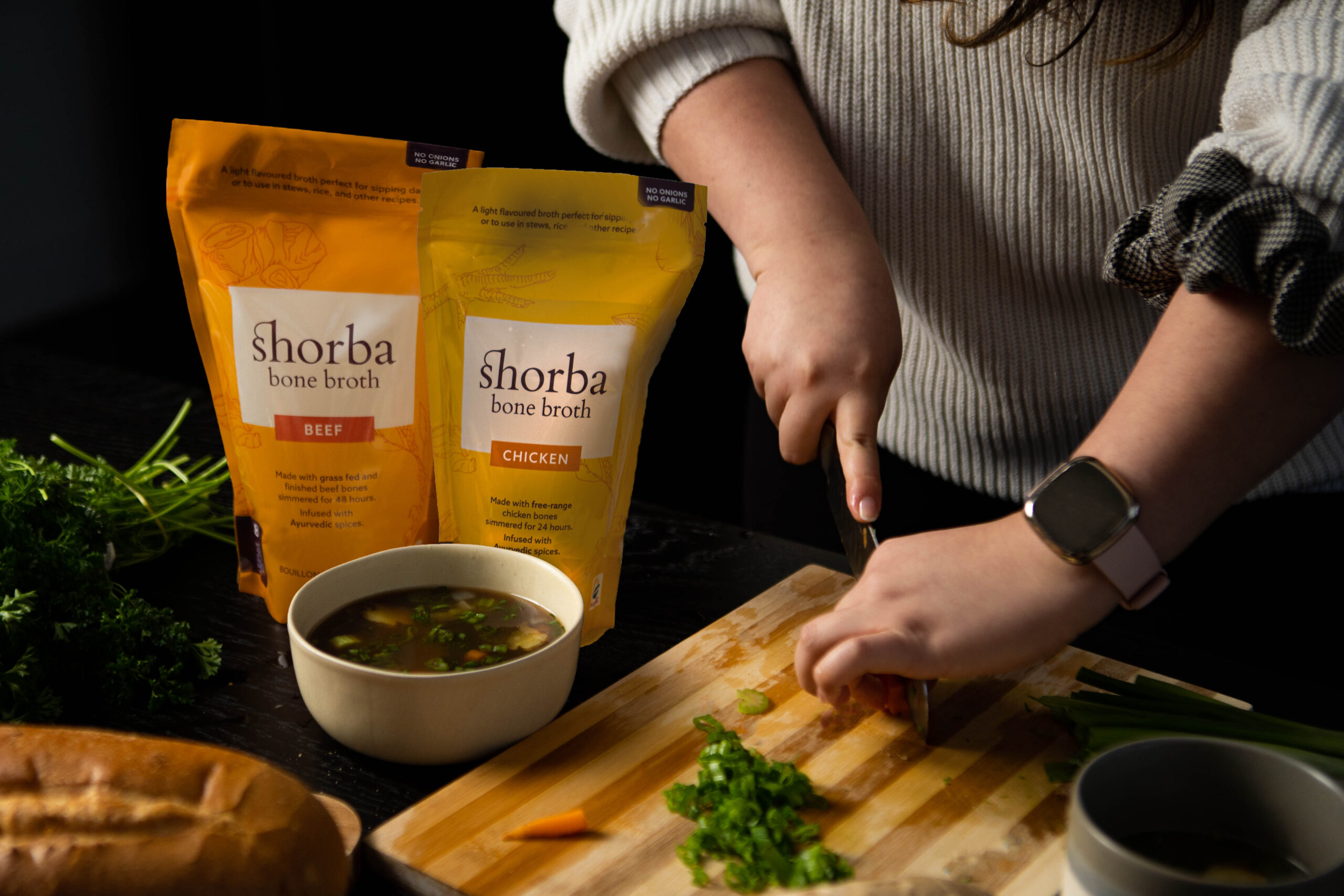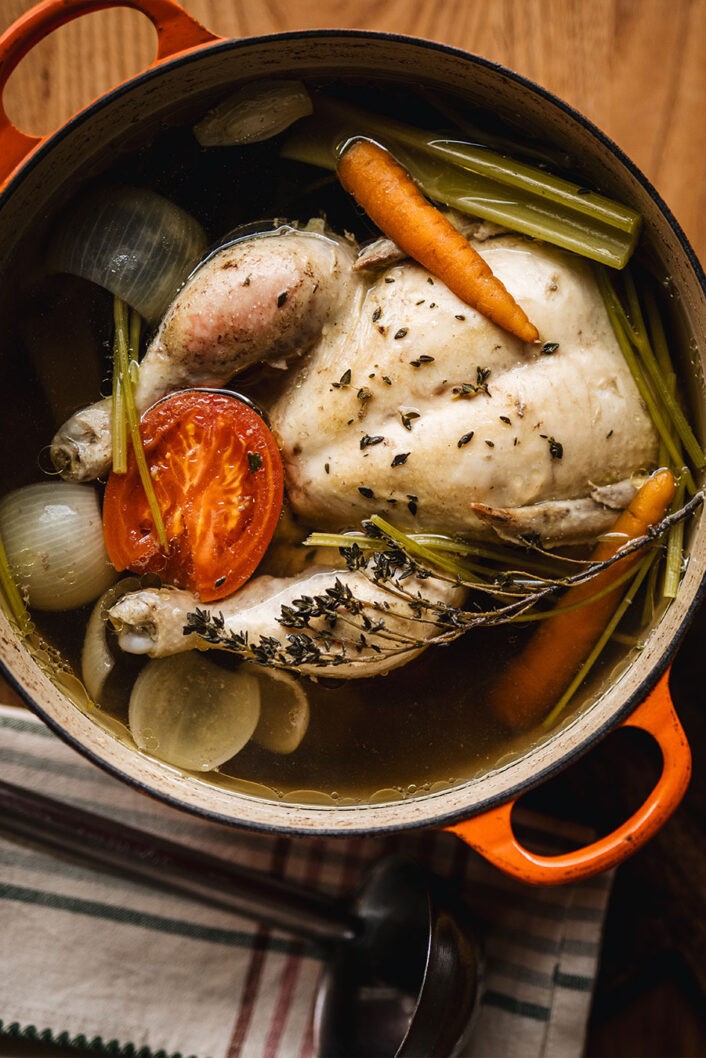The Ultimate Overview to Making and Taking Pleasure In Organic Bone Broths in your home
Bone brew has gained focus for its various health advantages and culinary versatility. Crafting organic bone broth at home allows people to regulate the high quality of ingredients, making certain a nutritious outcome. Understanding the selection of bones, vital flavor parts, and proper food preparation strategies is vital. As the process unfolds, one may ask yourself exactly how to elevate their broth past the fundamentals and incorporate it into everyday meals for enhanced taste and nutrition.
Recognizing the Health And Wellness Advantages of Bone Broth
Although bone broth has actually been a staple in various cuisines for centuries, its health advantages have obtained significant attention over the last few years. Rich in collagen, amino acids, and minerals, bone brew is often touted for its prospective to support joint wellness, boost gut function, and boost skin elasticity. The gelatin stemmed from prepared bones might assist food digestion and aid secure the digestive tract lining, possibly reducing issues like leaking digestive tract syndrome.Furthermore, the existence of nutrients such as glucosamine and chondroitin may contribute to lowered inflammation and pain relief in joints. In addition, bone broth is moistening and can work as a healthy base for soups and stews. Many proponents likewise claim that it improves the body immune system, thanks to its mineral account. Generally, the rebirth of interest in bone broth is connected to its viewed capability to promote overall well-being and support numerous physical features.
Selecting the Right Bones for Maximum Taste and Nourishment
What variables should one consider when picking bones for brew prep work? The kind of bones made use of significantly influences both taste and dietary value. Initially, it is important to pick bones that include a mix of marrow bones, joint bones, and meaty bones. Marrow bones provide rich flavors and healthy and balanced fats, while joint bones add collagen, enhancing the brew's nutritional profile.Additionally, sourcing bones from pasture-raised or grass-fed animals assurances better and even more nutrients, as these animals are usually healthier. The quality of the bones is also important; choosing bones from regional butchers or farmers' markets can ensure excellent flavor. Bone size matters too; larger bones release even more jelly, leading to a richer broth. Thinking about the type of animal-- fish, hen, or beef-- can influence the final preference, allowing for versatile brew alternatives customized to specific choices.
Necessary Ingredients for a Savory Bone Broth

Quality Bone Choice
The foundation of a flavorful bone broth depends on the mindful choice of high-quality bones. Sourcing natural, grass-fed or pasture-raised bones is crucial, as these choices are most likely to be free from unsafe additives and provide premium nutrients. Varieties such as poultry, lamb, or beef bones each impart distinct flavors and health and wellness benefits. Bone kinds, including marrow bones, knuckle bones, and oxtails, contribute jelly and collagen, enhancing the broth's texture. Choosing bones with a mix of meat and connective cells can additionally add splendor and depth. Additionally, selecting bones with visible marrow guarantees a nutrient-dense brew, elevating the general quality. Eventually, spending time in top quality bone choice lays the groundwork for a tasty and beneficial broth.
Fragrant Flavor Enhancers
Choosing high-grade bones establishes the stage for a nutritious and rich bone broth, however it is the addition of aromatic taste boosters that really elevates the recipe. Active ingredients such as onions, garlic, and carrots not only pass on sweet taste yet likewise contribute depth to the broth. Fresh natural herbs like bay, parsley, and thyme leaves include an aromatic note, while spices such as black peppercorns and cloves present heat and complexity. In addition, incorporating a dash of apple cider vinegar can help essence minerals from the bones, improving the broth. These taste enhancers develop a harmonious mix, changing a simple brew into a mouthwatering foundation for soups, sauces, or stews, making it a functional component in any culinary arsenal.
Step-by-Step Overview to Making Bone Brew in your home
Developing bone broth in your home can be a gratifying cooking undertaking that boosts both taste and nutrition in different recipes. To start, one should choose top quality bones, preferably from grass-fed or natural resources. Toasting the bones at 400 ° F for concerning thirty minutes can intensify the taste. Next off, move the roasted bones to a big pot or sluggish stove and cover them with chilly water. Adding a sprinkle of vinegar aids extract minerals from the bones.Include fragrant veggies like onions, carrots, and celery for added deepness, in addition to natural herbs and flavors as wanted. Bring the mix to a boil, after that reduce to a simmer. It is necessary to let the broth simmer for a minimum of 12 hours, however longer is more effective for optimum richness. Lastly, pressure the broth through a fine-mesh screen and shop it in impermeable containers, prepared to boost dishes with its nutritious essence.

Tips for Perfecting Your Bone Brew Simmer
While simmering bone broth, maintaining the right temperature and timing is essential for attaining a abundant and delicious result. A mild simmer, ideally in between 190 ° F and 210 ° F, aids remove optimum nutrients and tastes without steaming, which can make the broth cloudy. It is suggested to keep track of the pot closely, readjusting the warmth as required to maintain this simmer.Timing is also essential; a longer simmer, commonly varying from 12 to two days, allows for much deeper flavor extraction and collagen launch. For hen bones, a 12 to 24-hour simmer suffices, while beef bones profit from longer food preparation times.Additionally, skimming any foam or contaminations that rise to the surface area during the very first couple of hours can enhance the broth's quality and taste. Guaranteeing the pot is covered throughout simmering assists to retain moisture and intensify the flavors, making for an extra enjoyable end item.
Creative Ways to Use Bone Brew in Your Food preparation
Integrating bone brew into various meals raises both flavor and dietary value. Cooks and home chefs alike find that making use of bone broth as a base for soups and stews boosts depth and richness, changing simple dishes right into hearty dishes. It can additionally be used in risottos, where the brew changes water, allowing the grains to absorb its full-flavored essence.Additionally, bone brew acts as an exceptional food preparation liquid for grains like quinoa or rice, instilling them with nutrients and flavor. For an added spin, it can be used in braising meats, causing tender, flavorful outcomes. Even sauces profit from a dash of bone brew, enriching their taste profile.Moreover, bone broth can be incorporated into shakes for an unanticipated health increase, Clicking Here providing protein and nutrients without compromising preference. These creative applications showcase the versatility of bone broth in everyday food preparation, making it a very useful kitchen staple.
Saving and Maintaining Your Self-made Bone Broth
Correct storage space and conservation of homemade bone brew is vital for keeping its flavor and nutritional advantages. Freezing strategies and refrigeration ideal methods play an important duty in prolonging the brew's life span. Comprehending these methods can help assure that the brew continues to be risk-free and scrumptious for future use.

Freezing Methods Explained
Freezing strategies are essential for properly keeping and preserving home made bone broth, guaranteeing its rich flavors and nutrients stay intact for future usage. To freeze bone brew, it is suggested to let it great completely before moving it to storage containers. Glass jars, silicone molds, or heavy-duty freezer bags appropriate choices. When making use of jars, leave room on top for development during cold. Portioning the broth right into smaller amounts permits for very easy thawing and lessens waste. Label containers with the day and components for easy identification. For peak top quality, consume the icy broth within 3 to six months - Beef Broth. Thawing can be performed in the refrigerator or by making use of a microwave, ensuring that the broth is heated completely prior to consumption
Refrigeration Best Practices
While several emphasis on freezing as a technique of conservation, refrigeration also plays an important role in saving homemade bone broth effectively. When cooled down, bone broth need to be transferred to airtight containers, ensuring marginal air exposure to stop perishing. It is recommended to cool broth within two hours of cooking to keep its top quality. Commonly, homemade bone brew can be saved in the fridge for as much as 5 days. Identifying containers with days can assist track freshness. For peak taste and safety and her comment is here security, brew needs to be reheated to a rolling boil before usage. If longer storage is required, freezing remains a superb alternative, however proper refrigeration practices ensure that bone brew stays delicious and healthy for temporary usage.
Regularly Asked Inquiries
Can I Utilize Frozen Bones for Making Bone Brew?
The question of utilizing frozen bones for bone broth emerges regularly (Organic Bone Broths). Professionals agree that frozen bones can be used successfully, however they should be thawed before cooking to ensure suitable flavor and nutrient extraction
Exactly How Long Can I Store Homemade Bone Brew?

Is It Safe to Reheat Bone Broth Several Times?
Reheating bone broth numerous times can posture safety and security problems - Organic Bone Broths. Each reheating cycle enhances the risk of microbial development. It is a good idea to reheat only once and save any kind of leftovers without delay to guarantee safety and security and high quality
Can I Add Veggies to the Broth for Taste?
Adding vegetables to brew boosts flavor and nutritional worth. Common selections consist of carrots, onions, and celery. The veggies instill their essence right into the brew, producing a richer and extra tasty end product.
What's the very best Way to Defrost Frozen Bone Brew?
To thaw icy bone brew, one can put it in the fridge overnight, use a microwave on low warm, or immerse the secured container in cozy water, making sure even thawing without jeopardizing flavor or nutrients. It is essential to choose bones that consist of a mix of marrow bones, joint bones, and meaty bones. Marrow bones give healthy fats Read Full Article and abundant flavors, while joint bones contribute collagen, boosting the brew's nutritional profile.Additionally, sourcing bones from pasture-raised or grass-fed pets assurances greater high quality and even more nutrients, as these pets are generally much healthier. Bone types, consisting of marrow bones, knuckle bones, and oxtails, contribute gelatin and collagen, improving the broth's structure. Choosing high-grade bones sets the stage for a rich and nourishing bone brew, however it is the addition of aromatic taste enhancers that really boosts the dish. Also sauces benefit from a dash of bone broth, enriching their preference profile.Moreover, bone broth can be integrated into smoothies for an unanticipated wellness increase, supplying healthy protein and nutrients without compromising preference.